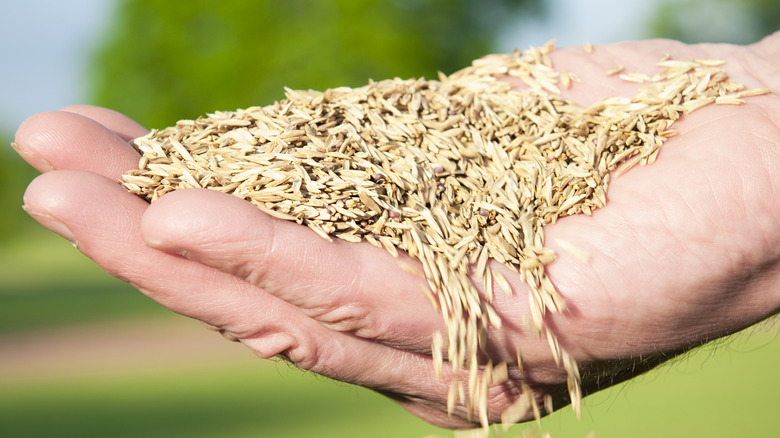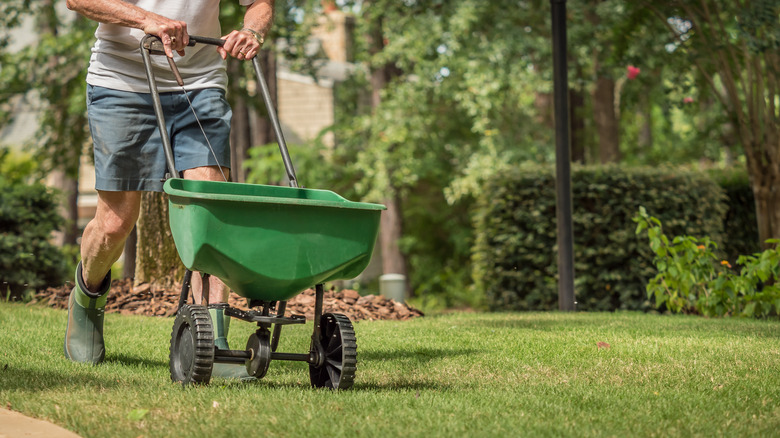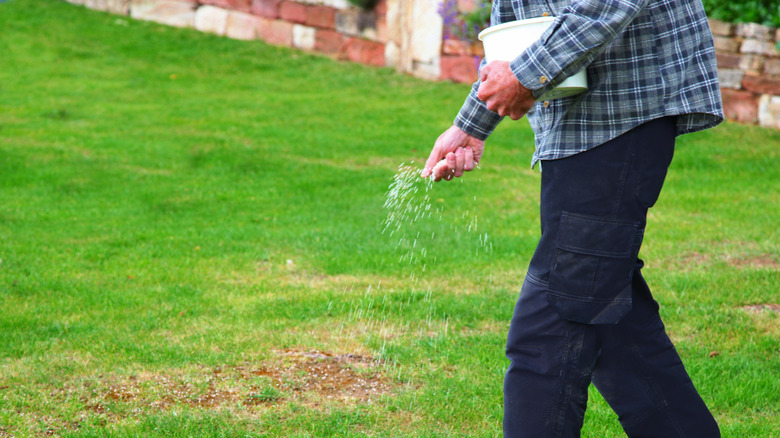Which Type Of Grass Seed Is Best For Overseeding?
A few bare spots in your lawn don't mean you need to tear it up and reseed the entire area. Overseeding works well in these areas by allowing you to add new seeds just where it's needed, such as bare spots, or to thicken up larger areas. Yet, because you're not tilling the soil and creating the ideal soil consistency, it's essential to choose the best type of grass seed that will do well in this environment. Typically, the best type of overseeding grass is the type that's already there so that it blends in well with the surrounding areas.
There are some types of grass seed that do well in many areas, though, such as Kentucky bluegrass, which is known for being easy to establish and reliable for long-term use. Beyond this type, choose a grass seed that works well in your climate and based on the conditions in your space. Some grass varieties are best for colder areas, drought-specific conditions, and heavy-traffic paths around your home.
Which one is best for you is dependent on your specific property layout and needs, including factors like the amount of sun exposure and shade the area will receive. Overseeding your lawn requires a bit more attention than just picking up a bag from the home improvement store, but with a few steps, you can have a healthy, green lawn.
Reliable types of grass seed for overseeding
Certain varieties of seed do better for overseeding thinned areas. As noted, Kentucky bluegrass is a reliable option and works well as cool-season grass, which means that, in the South, you can use it to fill in gaps in your green lawn over the colder months. This option is durable and creates a thick area of grass, and can tolerate dips into freezing temperatures fairly well. It's also drought-resistant, not requiring constant watering, and is a good option for handling moderate to better traffic.
Fine fescue can also be a popular option for spring and fall overseeding because it has a finer texture, allowing it to blend well with existing grass. It does well in sun or shade, and, as a cool-season grass, it's likely to grow easily in most conditions creating a carpet-like lawn in no time. It requires a bit more watering than what you'll need with Kentucky bluegrass but tends to be reliable, especially when you purchase a higher-quality product. By contrast, tall fescue is coarse and has a dense growth pattern, making it a good option for areas with periods of dry weather. It's an excellent option for heavy-traffic areas too.
Additional overseeding grass types to consider
In some situations, being particular about the grass seed you choose is important. If you want grass that can handle heavy traffic and a lot of sun, for example, consider perennial ryegrass, which is easy enough to grow but can handle more intense play and pets. It's also a good warm-season overseeding option for most areas. It's best in USDA zones 3-7.
Another option is annual ryegrass, which is a single-season type of grass. That means it does well to establish quickly and is easily blended into an existing lawn. It's an excellent choice when you need fast results to green up your lawn, such as after a period of hot temperature in the South that's dried out patches just before the family reunion in a few weeks.
What if you live in an area that's more of a transition zone, where cold and warm weather intermix for a few months of the year? You can overseed during this time. Just choose the right grass seed, like zoysia grass. It does well to tolerate some cold temperatures, though it thrives in warmer weather. It also doesn't require much watering, which is excellent for areas where there are longer dry spells during the warmer months. Seeding your lawn is a task requiring careful attention to the specific conditions present, but many types of grass seed are forgiving.


